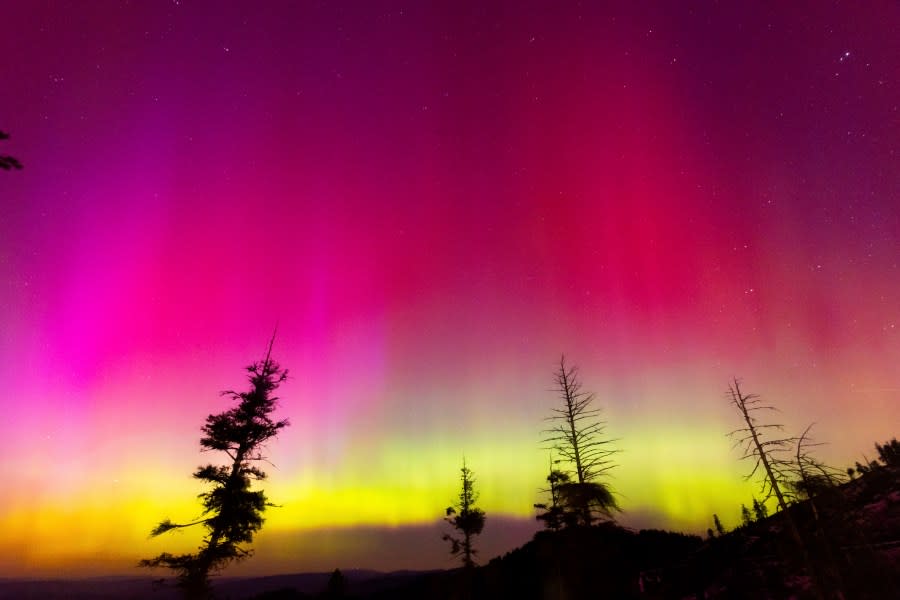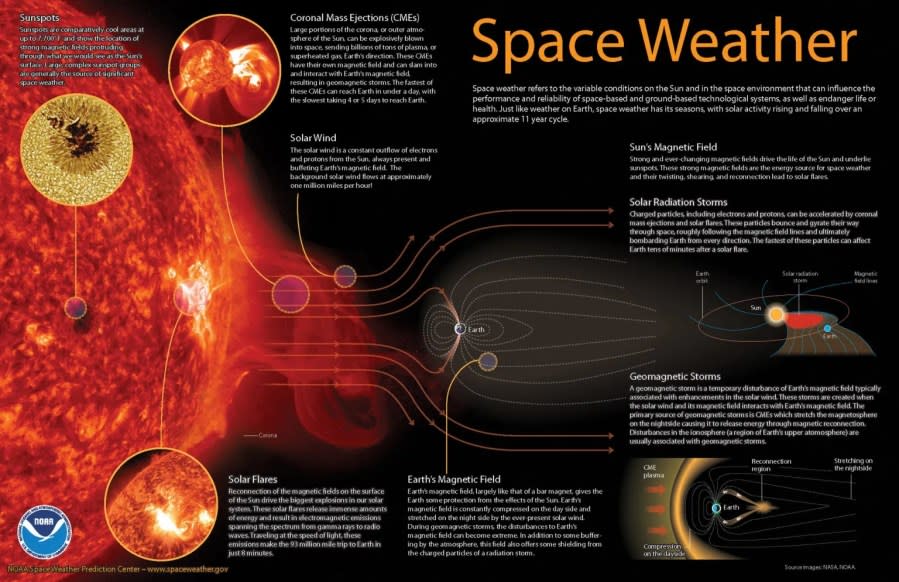What is a G5 geomagnetic storm?

(NEXSTAR) — On Friday night, the most significant G5 geomagnetic storm since 2003 hit Earth — causing several coronal mass ejections, or CMEs — and allowing many across the U.S. to see northern lights where they usually can’t.
But just what does all this mean?
To start with, as explained by the weather team at Nexstar’s WGN-TV in Chicago, a geomagnetic storm is “a disturbance in the Earth’s magnetosphere caused by solar wind activity.” Wind from these storms can cause aurora in the sky, in addition to possible disturbances in satellite communications.
NOAA’s Space Weather Prediction Center (SWPC) rates the strength of solar storms on a G scale — from G1 to G5. The current storm was initially rated as G4 severity, though it ultimately intensified.
A huge solar storm is hitting the US: 6 big questions and answers
One thing that makes this event so rare is the severity. Even when the storm was considered a G4, it would’ve been the first of that intensity to hit the Earth since the Bush administration (January 2005).
When CMEs (which are explosions of plasma and magnetic material from the sun) reach Earth, they carry with them their own magnetic field, explained Robert Steenburgh, a space scientist at SWPC. This could potentially impact things like power grids and radio communications.

According to NOAA, the difference between a G4 and a G5 storm is that a G4 has the potential for widespread power problems or glitches. With a G5 storm, complete blackouts and power grid collapses are possible.
With a G4, aurora can be seen as low in the U.S. as Alabama or northern California, while auroras can possibly be seen from as low as Florida and south Texas with a G5 storm.
Will Americans see the northern lights again Saturday night?
Residents of several U.S. states reported seeing auroras on Friday night, including areas of Illinois, Colorado, Georgia, New York, and Florida. According to the NOAA’s Aurora Forecast, the majority of households who saw the northern lights last night will have a chance to watch them on Saturday.
Saturday’s aurora activity could even continue on into Sunday and early next week, the Space Weather Prediction Center said, as solar activity remains especially high.
The threat of these geomagnetic storms will continue until the active sunspot cluster, which is roughly 16 times the diameter of Earth, rotates out of our view — this could take days.
If you’re in an area where it’s not expected to be as strong this weekend your best bet to see the lights is between 10 p.m. and 2 a.m. your local time. If you look up and don’t see anything, people with newer cell phones might just be able to catch a view that’s better than what you can see with the human eye.
For the latest news, weather, sports, and streaming video, head to The Hill.

